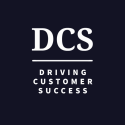Analytics For Customer Success

We have finally reached the point where analytics is considered table stakes for all businesses. At every level of the company, we acknowledge that insights from data are critical to our success in making smarter decisions every day. Although there is still work to be done, technology is making analytics more automatic and natural for everyone by progressing from IT-led reporting to standalone dashboards and now to infused analytics everywhere so that all knowledge workers have access to the personalized insights they need at the exact point they want to take action.
Until now, however, we have only considered the benefits of analytics for ourselves. Our focus has been on extracting insights from data to improve internal business processes and help our teams make smarter decisions. This leaves out an entire, mission-critical part of our business: our own products that we build for our own customers. We’ve found that today’s most innovative product leaders believe this is a missed opportunity and will take initiative to change that.
Just as analytics adoption increases within our own businesses when we infuse insights from data at the point of decision, the same is also true for our customers’ knowledge workers. This leads to customers finding greater success when they take action using our products and services. As the greatest business leaders know, we are most successful when our customers are successful, and customers are most successful when they make decisions using insights from data.
Analytics Drives Business Value
Many product leaders once considered analytics as separate from their core products. It was an extra addition, a request from product admins so they could monitor whether anyone was using the product. It was not something that could benefit the product’s actual business users. We now see that the opposite is true. In fact, when infused deeply into our products, analytics can actually increase customer success, satisfaction, and even loyalty. It can even be how we actually differentiate our products from others.
Take fitness devices, for example. All of them can measure heart rate or calories burned, but what sets the industry leaders apart is how they help people build healthier lifestyle habits—and infused analytics is that key. The most successful companies show users their historical trends, prescribe specific activities and exercises based on their goals, and notify them of their progress (and what to do as a result). All of these insights are based on data, and they are fundamental as to why consumers might choose one device over another and stick with it.
If consumer fitness companies understand that offering personalized, actionable analytics can drive customer satisfaction, how much more should we do the same with our business products? Customers ultimately purchase our products and services to accomplish things they could not before. Infusing analytics into our user experiences is how we can help customers make even smarter decisions and reach even greater goals.
Embedded And Personalized Analytics Is The Way
Currently, nearly all business products that deliver analytics to customers do so through methods that feel bolted on, such as emails, web portals, and standalone dashboards. These analytics are hard to find, unintuitive, and often irrelevant to most end-user goals. Disconnected from our core product workflows, we make it too hard for users to leverage analytics when making decisions, and consequently, our customers do not use them.
The solution is to embed analytics into our products and prioritize contextual insights over aggregated data so customers can be informed and take action in the exact same place. The best-embedded platforms offer extensive customization to fit naturally into existing product workflows, and recent advances in AI and other technologies mean we can automatically generate insights from data in the context of what our customers are doing and personalize it to their specific industry.
This can also allow us to go from descriptive analytics that simply informs to prescriptive analytics that advises which actions to take. Customer service reps can proactively reach out to customer accounts that are likely to churn. Healthcare companies can dynamically adjust appointment availability based on historical data and current demand. Retail managers can plan and shift inventory based on local sales, market trends, and a competitor’s promotions. These are the experiences we can give our customers, made possible by embedded analytics.
Barriers To Success With Analytics
Although there is a huge opportunity in enhancing our products with deeply embedded analytics, there are also several challenges to face. Product leaders must see analytics not as separate from their product but as an integrated part of the user experience. They must build on their customer relationships, carefully evaluating exactly what data customers want and need. And, most critically, they must evaluate wherein the product workflow they could use insights from the data.
Product leaders should also bring other parts of the company into the product development process, showcasing the benefits of embedded analytics, such as increased revenue or customer loyalty and satisfaction. They should work closely with executive leadership, building a road map that justifies prioritizing hiring analytics talent or investing in off-the-shelf tools. In some industries, such as healthcare, involving legal teams early on can help identify and solve regulatory or compliance hurdles that could complicate the using and sharing of data with customers.
Although these steps will require time and resources, the companies that tackle them will reap the rewards. They will be seen as innovative—differentiating themselves from the competition and becoming disruptive leaders within their industries. Their customers will derive even more value from the products, leading to greater customer satisfaction and stronger business relationships.
Analytics has come so far from the days of internal IT-led reporting. We now can infuse insights from data directly into the apps where our knowledge workers make decisions every day. It’s time to provide that same capability to our customers to help them find new heights of success.
-Scott Castle, SVP of Product for Sisense
Original post here.

Hakan Ozturk
Founder, theCScafe.com, #1 Weekly Customer Success Newsletter
Hakan Ozturk is a Paris-based Customer Success leader with over 15 years of experience in the computer software industry. Passionate about driving growth and delivering value to strategic customers, Hakan has established himself as a trusted industry expert. As the Founder of The Customer Success Café Newsletter and TopCSjobs.com, Hakan provides valuable industry insights and daily-updated job opportunities worldwide in the field of Customer Success. Connect with Hakan to boost your career in CS and your company’s potential for massive growth.

Leave a Reply